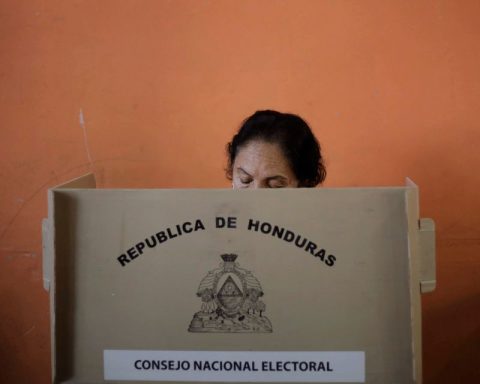The cash squeeze that the Ministry of Finance has been facing for several months continues to take its toll on the country’s fiscal stability, since the income projections that did not materialize had to be made up for by resorting to debt and Although this measure has helped in recent months, there is not much left to fall back on.
This is stated in a report presented by BTG Pactual, which shows that in December, the National Government sold $1.3 billion in TES, reducing its holdings to only $160,000 million pesos and closing the room for action to solve the lack of liquidity that it had taken advantage of until now.
More news: This week is the deadline to catch up with the ICA in Bogotá
Munir Jalil, chief economist for the Andean region of BTG Pactual, explained that although it is a valid solution, it is also advisable not to exhaust these alternatives so quickly, given that it is a mechanism that gets the country’s finances out of trouble in the event that unforeseen events arise or, for example, an emergency must be attended to.
“The Colombian debt experienced significant changes in the last year, especially in monthly behavior. An interesting event occurred in December, because the Government practically exhausted its position as a holder of TES, which confirms one of its strategies to obtain liquidity in the face of the persistent cash problems facing the country,” he said.
Debt.
iStock
Likewise, Jalil noted that it is not convenient for the holding of these treasury securities to be at such low levels, especially when this is one of the ways in which the Nation receives financing through market operations. Likewise, we must not forget that this is agreed at a fixed or variable rate and must be paid within the agreed terms.
“It is important to highlight that, in the context of a total debt of $582 billion, the balance of $160,000 million is relatively low and shows that the country had to get rid of most of the TES in its possession to meet immediate resource needs. “This situation underlines the financial pressure that continues to affect public finances,” he said.
According to BTG Pactual figures, the largest values in TES, at this time, are in the hands of pension funds ($187.8 billion); followed by the “rest” category, which houses insurance companies, collective portfolios, stock brokers, non-profit entities or cooperatives, among others, with a total of $122.1 billion.
Foreign capital funds ($102.9 billion) also appear on this list, commercial banks ($92.7 billion), Banco de la República ($32.2 billion), the public trust ($44.3 billion) and the Ministry of Finance with less than $200,000 million. In total, the Nation’s TES securities total $582.2 billion.
Also read: Numbers of bankrupt Colombians continue to increase
These analysts warned that although the impact on debt markets may be temporary, reliance on these types of measures could weaken investor confidence in the long term and that the massive sale of TES could increase supply in the market, putting pressure on investors. rising yields and increasing the cost of financing for the government.
red lines
Munir Jalil also spoke about the perception of risk for Colombia and maintained that it operates below the “red line” of rating agencies such as Standard & Poor’s, which means that any additional impact in the TES or the exchange rate will be transitory and is already reflected in current prices.

Munir Jalil, chief economist at BTG.
Juan Felipe Rubio
“There should be an impact, but I consider that this would be rather transitory. Much of this already seems to be reflected in the current prices of Colombian debt and in the behavior of the dollar. Although there could be movements around the announcement, I do not estimate that these are too structural,” he explained.
From the perspective of the rating agencies, Jalil considers that the risk Colombia already incorporates a differential that exceeds that of other countries. Therefore, even if the rating were equal to Brazil’s level, he does not believe it would have a significant or sustained effect, although he suggests keeping an eye on the announcement, which will probably occur in the coming weeks.
Regarding economic growth, he said that he projects it at moderate levels (around 1.8% – 2%), driven by the recovery of consumption of durable and non-durable goods, as well as public investment in regional projects. However, he warns that sectors such as housing continue to lag behind, although an improvement is expected in the coming years thanks to the reduction in mortgage interest rates.
You may be interested in: Lower the salary of congressmen, a fight that will have a new round
“In these quarters or with the photo to September, third quarter, the Colombian economy began to effectively show us some interesting recovery processes in consumption and in the case of investment, especially regional public works, not national, not 4G, not 5G, none of that, regional things, like the Bogotá metro,” he indicated.
tax rule
The BTG Pactual spokesperson also expects good news on the inflation side, as it has shown a downward trend, ending at 5.2% by 2024, with expectations of a drop to 3.8% by the end of 2025. In this sense, he indicated that factors such as the increase in the minimum wage and adjustments in services such as transportation and gasoline generate upward pressures, but will not prevent the Issuer from continuing to lower rates.

Ministry of Finance and Public Credit.
Photo: CEET – Néstor Gómez
Finally, Munir Jalil referred to the 2024 fiscal deficit, which for him could be between 5.6% or 6%, calling into question compliance with the fiscal rule and added that this situation, although worrying, would not be catastrophic, since several countries in the region face similar challenges, in which fiscal consolidation will be key in the coming years.
“The possibilities of complying with the fiscal rule, given the current deficits, are quite complicated. I consider that the chances of the Autonomous Committee deciding whether or not to approve compliance with the rule are 50-50. “This will depend largely on how certain government revenues are classified: whether they are considered structural or transitory,” he highlighted.
Thus, he closed by saying that if “these income is classified as transitory, it will be difficult to argue that the fiscal rule was complied with, which could lead to it not being approved. On the contrary, if they are considered as permanent income, the situation could change significantly. Ultimately, everything will depend on that technical assessment,” which is in the hands of the Carf.


















